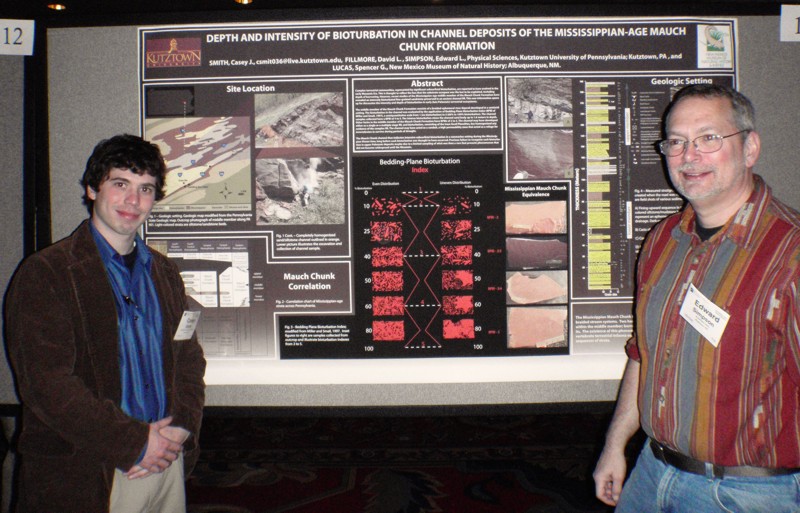
 Depth and Intensity of Bioturbation in
Channel Deposits of the Mississippian-Age Mauch Chunk Formation
Depth and Intensity of Bioturbation in
Channel Deposits of the Mississippian-Age Mauch Chunk Formation

 Depth and Intensity of Bioturbation in
Channel Deposits of the Mississippian-Age Mauch Chunk Formation
Depth and Intensity of Bioturbation in
Channel Deposits of the Mississippian-Age Mauch Chunk Formation
Smith, Casey
J., Fillmore, David L., Simpson, Edward, and Lucas,
Spencer G., 2010, Depth and Intensity of Bioturbation in Channel
Deposits of the Mississippian-Age Mauch Chunk Formation [abs]:
Geological Society of America Northeastern Section (45th Annual)
and Southeastern Section (59th Annual) Joint Meeting (13-16 March
2010).
 Complex terrestrial communities,
represented by significant subsurficial bioturbation, are reported
to have evolved in the early Mesozoic Era. This is thought to
reflect the fact that the substrate ecospace was the last to be
exploited, including depth of burrowing. However, recent studies of
the Mississippian-age middle member of the Mauch Chunk Formation
have revealed an intensely bioturbated fine-grained sandstone
preserved in an ancient channel fill. This new information opens up
for discussion the intensity and depth of bioturbation in early
(late Paleozoic) terrestrial ecosystems.
Complex terrestrial communities,
represented by significant subsurficial bioturbation, are reported
to have evolved in the early Mesozoic Era. This is thought to
reflect the fact that the substrate ecospace was the last to be
exploited, including depth of burrowing. However, recent studies of
the Mississippian-age middle member of the Mauch Chunk Formation
have revealed an intensely bioturbated fine-grained sandstone
preserved in an ancient channel fill. This new information opens up
for discussion the intensity and depth of bioturbation in early
(late Paleozoic) terrestrial ecosystems.